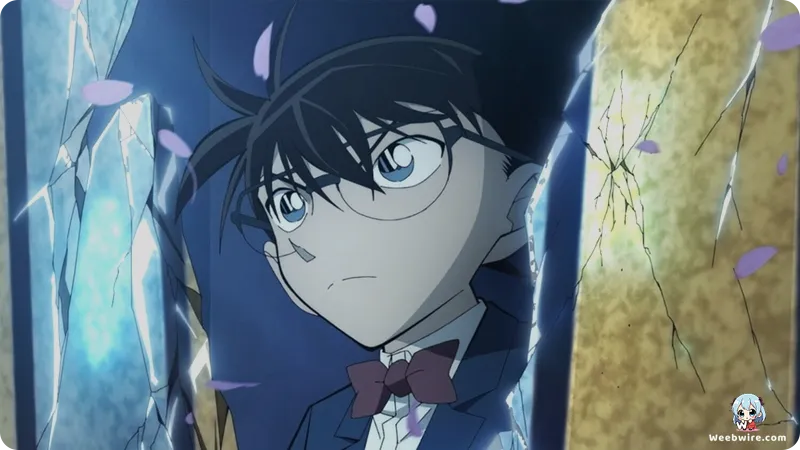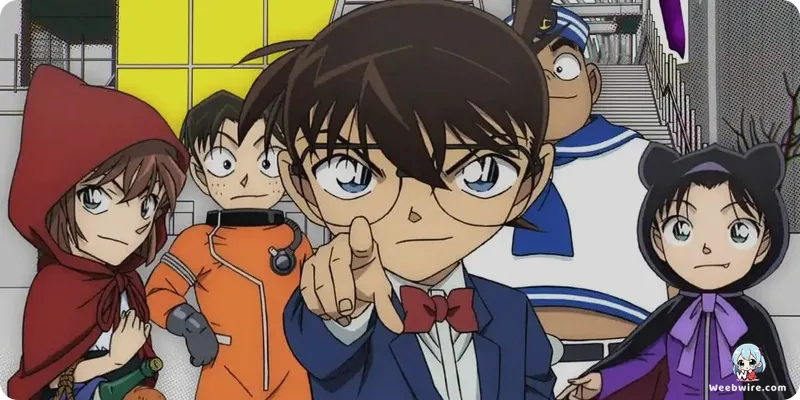Decoding Detective Conan: Fascinating Facts You Never Knew About the Global Phenomenon

For over two decades, the captivating universe of Case Closed, known globally as Detective Conan in Japan, has enthralled audiences with its intricate mysteries, brilliant deductions, and an ever-youthful protagonist. While many are familiar with high school detective Shinichi Kudo's transformation into child sleuth Conan Edogawa by a shadowy organization, a trove of fascinating, often overlooked facts and behind-the-scenes insights adds remarkable depth to this iconic series. These revelations not only showcase the creative genius behind the anime but also highlight its enduring cultural impact and unique place in animation history.
One striking aspect is the series' dual identity: Detective Conan in Japan, rebranded as Case Closed for Western markets due to copyright issues with "Conan the Barbarian." This strategic change allowed the series to reach a global audience, albeit under a different name.
The anime's unparalleled longevity introduces the "Sazae-san syndrome," where characters, particularly Conan, remain perpetually in their elementary school years despite over twenty-five years and hundreds of episodes. This charming temporal paradox is crucial for maintaining Conan's secret identity and the ongoing narrative.
The distinctive voice of Conan is masterfully delivered by Minami Takayama, also a renowned singer and part of the J-pop duo Two-Mix. Intriguingly, Two-Mix's music has occasionally featured within the anime itself, a delightful meta-narrative for keen fans. Takayama's versatile range captures both Conan's childlike innocence and Shinichi's sharp intellect.
Creator Gosho Aoyama's profound admiration for Sherlock Holmes permeates every aspect of Case Closed. Shinichi Kudo's name itself is a direct homage, with "Kudo" echoing "Holmes." Conan Edogawa's pseudonym cleverly fuses "Conan" from Arthur Conan Doyle with "Edogawa" from Japanese detective fiction pioneer Edogawa Ranpo, honoring titans of the genre.
Professor Hiroshi Agasa, Conan's eccentric neighbor and inventor, is a cornerstone, known for his ingenious gadgets. From the iconic Bowtie Voice Changer and Power-Assisted Kick Shoes to the Turbo Engine Skateboard, Agasa's inventions provide both comedic relief and improbable solutions, balancing serious mysteries with playful ingenuity.

The elusive Black Organization, responsible for shrinking Shinichi, remains the series' central, slow-burning mystery. Its methodical unraveling, with details parceled out across hundreds of episodes and films, keeps fans perpetually engaged in Conan's quest to expose them and regain his original body.
Adding further intrigue is the recurring phantom thief, Kaito Kid. Originating from Aoyama's earlier manga Magic Kaito, Kid's frequent guest appearances feature elaborate heists and a delightful cat-and-mouse dynamic, often with Conan mistaking him for Shinichi.
The anime meticulously integrates real-world Japanese locations, from Tokyo's bustling streets to historical landmarks, enhancing realism and offering viewers a virtual tour. The manga series itself is a publishing behemoth, with over 100 volumes, solidifying its place among the best-selling manga of all time and forming the foundation for the anime's enduring success.
TMS Entertainment, the animation studio, deserves immense credit for maintaining exceptionally high standards of animation and storytelling over decades. Their dedication and talent in adapting Aoyama's intricate plots week after week are vital to the anime's lasting appeal.
The world of Case Closed is a rich tapestry of intricate mysteries, memorable characters, and a fascinating production history. These lesser-known facts underscore the depth, creativity, and sheer commitment that have made it a beloved classic, captivating generations and securing its legacy as a cornerstone of the mystery genre.
Credits
Case Closed
Author
Gosho Aoyama
Cover Art
Gosho Aoyama
Studio
TMS Entertainment
Publisher
Shogakukan
Producers





